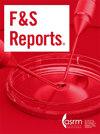Impact of follicle size before luteal progesterone supplementation on clinical outcomes of modified natural cycle single frozen embryo transfer
IF 2.2
引用次数: 0
Abstract
Objective
To determine whether follicle size at midcycle transvaginal sonography imaging before luteal progesterone supplementation predicts modified natural cycle single frozen embryo transfer (mNC-SFET) outcomes.
Design
Retrospective chart review.
Subjects
Frozen embryo transfer charts were reviewed. After inclusion and exclusion criteria were applied, data were abstracted from cases of mNC-SFET (n = 115).
Exposure
For group A, lead follicle measuring <16 mm on day of trigger or peak +ovulation predictor kit (n = 50), and for group B, lead follicle measuring ≥16 mm on day of trigger or peak +ovulation predictor kit (n = 65).
Main Outcome Measures
Follicle size analyzed as possible predictor of primary outcome ongoing pregnancy rate (OPR) as well as secondary outcomes implantation rate (IR), clinical pregnancy rate (CPR), and spontaneous abortion (SAB) rate via bivariate associations and multivariate logistic regression analyses.
Results
Bivariate analyses showed no differences between groups in OPR (A, 48.0%, 24/50, and B, 44.6 %, 29/65), IR (A, 64.0%, 32/50, and B, 61.5%, 40/65), CPR (A, 58.0%, 29/50, and B, 52.3%, 34/65), and SAB rates (A, 25.0%, 8/32, and B, 27.5%, 11/40). Multivariate analysis to investigate potential confounding between lead follicle size and outcomes of interest showed no difference in the primary and secondary outcomes. Furthermore, multivariate analyses using lead follicle size as a continuous variable showed no difference in outcomes.
Conclusion
In normo-ovulatory women undergoing mNC-SFET with natural endometrial preparation with human chorionic gonadotropin trigger or luteinizing hormone surge to time frozen embryo transfer, lead follicle size before luteal phase supplementation does not impact clinical outcomes such as IR, CPR, SAB rate, or OPR.
黄体黄体酮补充前卵泡大小对改良自然周期单冷冻胚胎移植临床结果的影响
目的确定黄体期黄体酮补充前中期经阴道超声成像的卵泡大小是否能预测改良自然周期单冻胚胎移植(mNC-SFET)的结果。研究对象A组在触发日或高峰期测量到16 mm的先导卵泡+排卵预测试剂盒(50例),B组在触发日或高峰期测量到≥16 mm的先导卵泡+排卵预测试剂盒(65例)。主要结果测量卵泡大小作为主要结果持续妊娠率(OPR)以及次要结果着床率(IR)、临床妊娠率(CPR)和自然流产率(SAB)的可能预测因子,通过双变量关联分析和多变量逻辑回归分析进行分析。结果双变量分析表明,不同组间在 OPR(A,48.0%,24/50;B,44.6%,29/65)、IR(A,64.0%,32/50;B,61.5%,40/65)、CPR(A,58.0%,29/50;B,52.3%,34/65)和 SAB 率(A,25.0%,8/32;B,27.5%,11/40)方面没有差异。为调查导卵泡大小与相关结果之间的潜在混杂因素而进行的多变量分析表明,主要结果和次要结果之间没有差异。此外,将先导卵泡大小作为连续变量进行的多变量分析表明,结果也没有差异。结论在进行mNC-SFET的正常排卵妇女中,使用人绒毛膜促性腺激素触发或黄体生成素激增进行自然子宫内膜制备以确定冷冻胚胎移植时间,黄体期补充前的先导卵泡大小不会影响IR、CPR、SAB率或OPR等临床结果。
本文章由计算机程序翻译,如有差异,请以英文原文为准。
求助全文
约1分钟内获得全文
求助全文

 求助内容:
求助内容: 应助结果提醒方式:
应助结果提醒方式:


